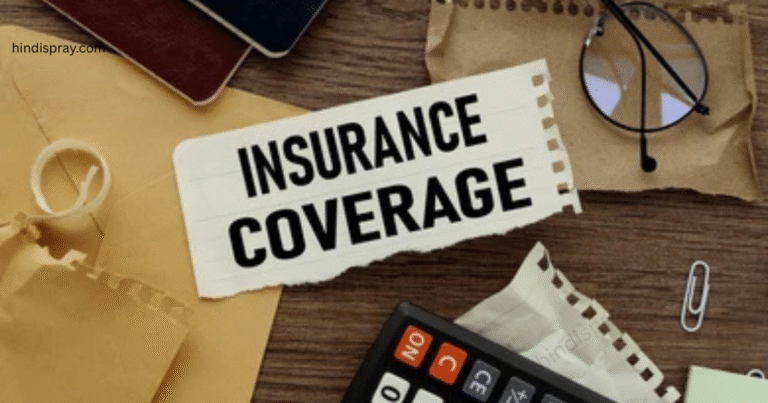Insurance can often feel like a maze of complex terms and confusing details, especially when it comes to coverage limits. Whether you’re buying auto, health, home, or any other type of insurance, understanding your coverage limits is crucial to making sure you are adequately protected. This article will guide you through everything you need to know about insurance coverage limits, why they matter, and how to choose the right limits for your situation.
What Are Insurance Coverage Limits?
Definition of Coverage Limits
Insurance coverage limits refer to the maximum amount an insurance company will pay out for a covered loss under a policy. These limits set the ceiling on your financial protection in case of accidents, damages, or other insured events.
For example, if you have an auto insurance policy with a $50,000 bodily injury coverage limit, the insurer will pay up to $50,000 per accident for injuries you cause to others.
Types of Coverage Limits
- Per Occurrence Limit: The maximum payout for a single claim or event.
- Aggregate Limit: The total maximum payout for all claims during the policy term.
- Per Person Limit: Maximum amount the insurer will pay for injuries or damages to any one individual in an incident.
Understanding these types helps clarify what your policy will cover and where the limits might apply differently.
Why Are Insurance Coverage Limits Important?
Protecting Yourself Financially
Insurance coverage limits determine how much of your losses will be covered by your insurer. If your damages or liabilities exceed these limits, you may be responsible for paying the remainder out-of-pocket. Choosing inadequate limits can leave you financially vulnerable.
Legal Requirements

In many places, minimum coverage limits are required by law, especially for auto insurance. These legal minimums protect other parties on the road but often are not sufficient to cover all damages in a serious accident.
Cost vs. Coverage Trade-off
Higher coverage limits generally mean higher premiums. Finding the right balance between affordable premiums and adequate protection is key.
How Coverage Limits Work Across Different Types of Insurance
Auto Insurance Coverage Limits
Auto insurance typically includes several coverage types, each with its own limits:
- Bodily Injury Liability: Covers injuries you cause to others. Usually expressed as two numbers, e.g., $50,000/$100,000 (per person/per accident).
- Property Damage Liability: Covers damage you cause to others’ property.
- Collision and Comprehensive: Cover damages to your own vehicle, often with deductibles and separate limits.
Homeowners Insurance Limits
Homeowners insurance limits typically cover:
- Dwelling Coverage: The cost to repair or replace your home.
- Personal Property Coverage: Protects your belongings.
- Liability Coverage: Covers injuries or damages to others on your property.
- Additional Living Expenses: Costs if you must live elsewhere during repairs.
Health Insurance Coverage Limits
Health insurance policies often have limits in the form of:
- Annual or Lifetime Maximums: Caps on how much the insurer pays in total.
- Out-of-Pocket Maximums: The most you pay before the insurer covers 100% of eligible expenses.
- Service-Specific Limits: Limits on particular treatments or visits.
How to Determine the Right Coverage Limits for You
Assess Your Risk Exposure
Consider your assets, income, and potential liabilities. For example, if you own a home or have significant savings, you might want higher liability limits to protect your assets.
Review Legal Requirements
Start with state or local insurance minimums, then decide if these meet your needs.
Factor in Your Lifestyle and Needs
If you drive frequently or have a high-value vehicle, higher auto coverage limits make sense. If you own valuable belongings or live in an area prone to natural disasters, increase your home coverage accordingly.
Consult an Insurance Professional
An insurance agent or broker can help analyze your situation and recommend appropriate limits.
What Happens If You Exceed Your Coverage Limits?
Paying Out-of-Pocket Expenses
If your claim exceeds your coverage limits, you’re responsible for the remaining costs. For example, if you cause $100,000 in bodily injury damages but your coverage limit is $50,000, you must pay the extra $50,000 yourself.
Legal Risks
If you cannot pay the excess damages, you may face lawsuits, wage garnishment, or liens on your property.
Importance of Umbrella Policies
Umbrella insurance provides additional liability coverage beyond your primary policies. It acts as a financial safety net when your underlying coverage limits are insufficient.
Common Misconceptions About Coverage Limits
“Minimum Limits Are Enough”
Many people think that state-required minimum limits provide adequate protection. In reality, these limits often fall short, especially in serious accidents or disasters.
“I Don’t Need Liability Coverage if I’m Careful”
Accidents can happen to anyone. Liability coverage protects you from financial devastation caused by injuries or damages to others.
“My Property Insurance Covers Everything”

Standard homeowners or renters policies may exclude certain events like floods or earthquakes. Check your policy for limits and exclusions.
Tips to Manage Your Coverage Limits Effectively
Regularly Review Your Policy
Life changes such as buying a home, having children, or acquiring valuable assets should prompt a review of your insurance limits.
Increase Limits Gradually
If premium costs are a concern, gradually increasing your limits over time can provide better protection without a large immediate increase in premiums.
Use Deductibles Strategically
Balancing higher deductibles with adequate limits can help manage premium costs while maintaining good coverage.
Also Read: How To Choose The Best Insurance Provider For Your Needs?
Conclusion
Understanding insurance coverage limits is vital to securing your financial future and protecting your assets. While insurance policies can be complex, knowing how limits work and assessing your personal risks can help you choose the right coverage. Don’t settle for minimum requirements alone — aim for limits that provide peace of mind. Regularly review your insurance policies, adjust your limits as needed, and consider umbrella policies for extra protection. With the right approach, you can confidently navigate insurance and safeguard what matters most.
FAQs
1. What happens if I file a claim that exceeds my coverage limit?
If your claim exceeds your coverage limit, you will be responsible for paying the remaining costs out of pocket. Your insurer will only cover up to the policy’s maximum limit.
2. Can I increase my coverage limits after purchasing a policy?
Yes, most insurance companies allow you to increase your coverage limits during the policy term or at renewal. This may increase your premiums.
3. Are coverage limits the same as deductibles?
No, coverage limits are the maximum amount an insurer will pay on a claim, while deductibles are the amount you pay before insurance kicks in.
4. How do I know what coverage limits are right for me?
Consider your financial situation, assets, and potential risks. Consulting with an insurance agent can help tailor coverage limits to your needs.
5. What is an umbrella insurance policy and how does it relate to coverage limits?
An umbrella policy provides additional liability coverage beyond the limits of your standard policies (auto, home, etc.), offering extra financial protection if your primary limits are exceeded.

